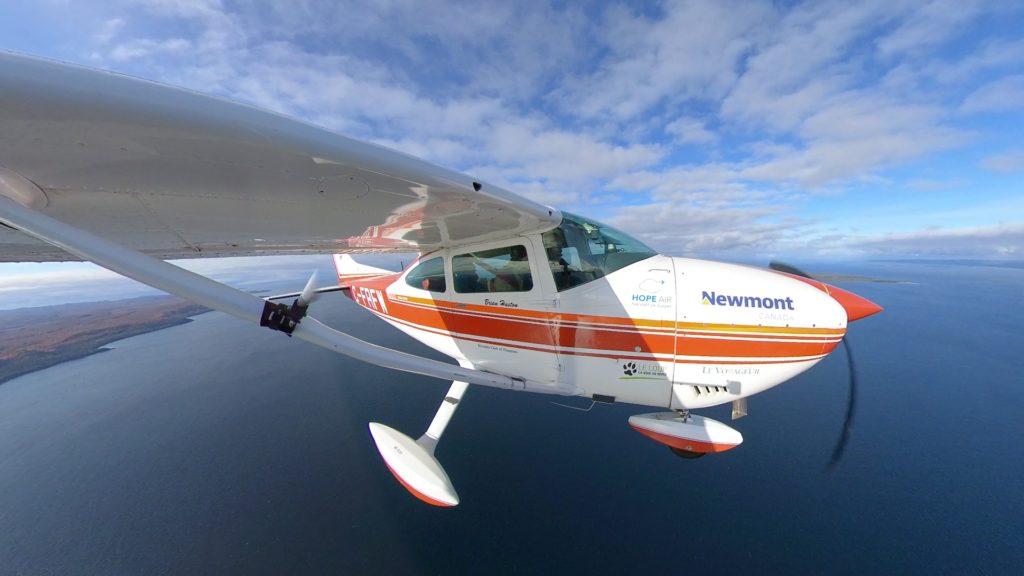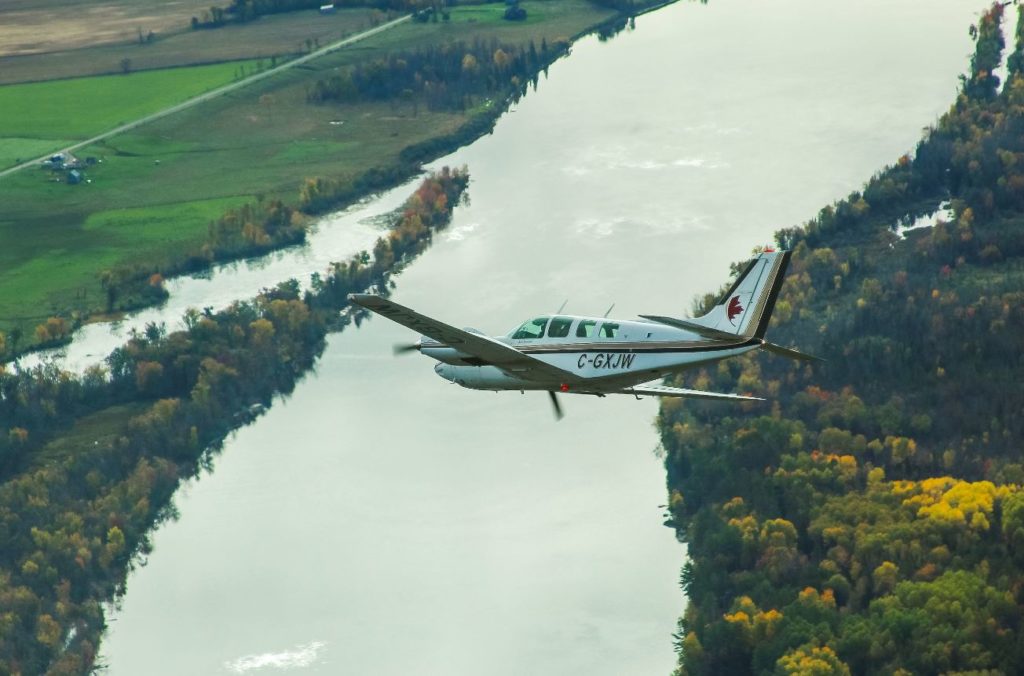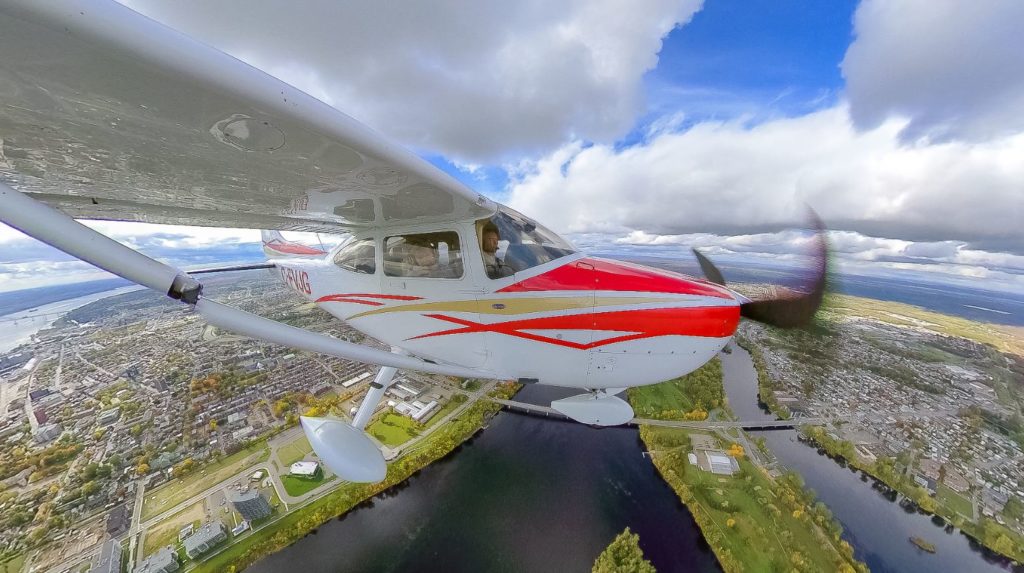Estimated reading time 6 minutes, 33 seconds.
Since 1986, Canadians who live in remote areas and find themselves requiring medical care far from home have relied on Hope Air’s free flights and accommodations. In those 36 years, over 150,000 patient transports have taken place – thanks to people like Lee Arsenault and Marilyn Staig.

The team, who also happens to be married, has been volunteering since 2016, successfully transporting 28 patients in their Diamond DA-40. Arsenault said he heard about Hope Air back in 2015 from another pilot who was volunteering.
“It caught our interest because we were looking to do volunteer work, and so it gave us the perfect opportunity to fly and to provide a service to people in need,” he said.

Staig says what sold her on the idea was that she could meet the people she’s helping, hearing their stories first-hand. “The other thing that was really appealing to us is it’s something we can do together,” she added.
Often, her chief role is to “soothe patients.” Sometimes, “they’re nervous about flying in a small aircraft and so [Marilyn] can put their mind at ease,” said Arsenault.

The couple were approached by Give Hope Wings (GHW) founder, Dave McElroy, who asked them if they’d be interested in joining a Coast to Coast GHW Expedition in 2020. It was decided to delay the GHW Coast to Coast to 2021 and do a smaller expedition in 2020. The five-day Give Hope Wings: Sault to Saguenay Expedition was created with Arsenault and Staig as lead organizers.
“We were pretty busy most of 2020,” she admitted, “planning this event, there’s so many aspects to it. It’s the hotels and the airplanes . . . ground transportation, the airports . . . and then, of course, COVID added another huge dimension to it in terms of the protocols that have to be in place.”

Nine pilots signed up for the five-day expedition (Sept. 30 to Oct. 4, 2020), intending to raise $100,000. In the end, only six went out due to weather. Of the over $120,000 raised, almost $80,000 came from pilot fundraising.
The pilots pay their costs during the event while also committing to fundraise. “We are deeply grateful for the passion and commitment of the volunteers who successfully organized the Give Hope Wings expedition,” said Mark Rubinstein, CEO of Hope Air. “As a result of their fundraising efforts, Hope Air will be able to help many more patients travel to reach critical medical care.”

The couple is already looking towards the 2021 GHW expedition. Give Hope Wings: Canada Coast to Coast Expedition aims to engage 50 pilots and raise $1 million.
Due to the COVID-19 crisis, it is expected that many more families will struggle to get to treatment due to financial hardship. Hope Air is Canada’s only national charity providing free air transportation for people living outside of large communities. “Because of their physical conditions, they cannot sustain five or six hours, even eight, nine hours of travel time to get to their appointments,” added Arsenault. Without Hope Air, “approximately 30 per cent of these patients would not get to medical centres,” he said.

Of the 150,000 transport flights donated over the past three decades, a large percentage were offered through commercial airlines, like Porter and WestJet, which have also been affected by the pandemic.
“The demand is going to be very high,” Arsenault said. “What’s also happening is that the commercial airlines now are not flying to the smaller locations; for example, Air Canada used to fly in at North Bay… they don’t do that, so there are patients in North Bay that are left without options.”
In July, Hope Air transported a woman who was receiving cancer treatment in Ottawa. “We found out that she had Non-Hodgkin’s lymphoma, stage 4, level 2,” Arsenault said. “Ironically, I had the exact same cancer back in 1990.” He hoped she found it inspiring, knowing her pilot was a survivor.
“It made me realize I lived close to Toronto, so I had access to the best medical care, and I didn’t have to worry about the high cost of travelling to get to and from medical care.”
Both Arsenault and Staig admit what they miss most right now are the hugs. Before COVID, it was common to receive one as a thank you, but the once-common embraces are on hold for now.
“There’s a very strict protocol for flights now,” he said. “However, it’s still just as rewarding.”








